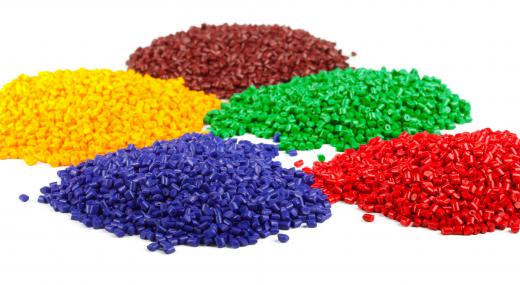Injection molding is a process of shaping plastic by melting it and injecting it into a predesigned mold. The process was first designed in the 1930s and was originally based on metal die casting designs. It offers many advantages to alternative manufacturing methods, including minimal losses from scrap (since scrap pieces can be melted and recycled), and minimal finishing requirements. This process differs from metal die casting in that molten metals can simply be poured; plastic resins must be injected with force.
The process uses large injection molding machines, which advance the resins through six major processes to produce everything from computer parts to plastic Halloween spiders. Although this machine is a complex piece of equipment, it consists of two basic elements: the injection unit and the clamping unit.

The process starts with a mold, which is clamped under pressure to accommodate the injection and cooling process. Then, pelletized resins are fed into the machine, followed by the appropriate colorants. The resins then fall into an injection barrel, where they are heated to a melting point, and then injected into the mold through either a screw or ramming device.

Then comes the dwelling phase, in which the molten plastics are contained within the mold, and hydraulic or mechanical pressure is applied to make sure all of the cavities within the mold are filled. The plastics are then allowed to cool within the mold, which is then opened by separating the two halves of the mold. In the final step, the plastic part is ejected from the mold with ejecting pins. The completed part may contain extraneous bits called runners, which are trimmed off and recycled. The entire process is cyclical, with cycle times ranging from between ten and 100 seconds, depending on the required cooling time.
The injection molding process requires some complex calculations. Every different type of resin has a shrinkage value that must be factored in, and the mold must compensate for it. If this value is not precisely determined, the final product will be incorrectly sized or may contain flaws. Typically, this is compensated for by first filling the mold with resin, holding it under pressure, and then adding more resin to compensate for contraction. Other complications may include burned parts resulting from the melt temperature being set too high, warpage resulting from an uneven surface temperature, or incomplete filling due to a too slow of an injection stroke.
Injection molds themselves can be surprisingly expensive, sometimes upward of $100,000 US Dollars (USD). If the desired part quantity is great enough, however, the mold cost becomes relatively insignificant, and the resulting plastic parts are very reasonably priced. Some molds are made with more than one cavity; these multicavity molds cost more than their single cavity counterparts, but due to increased production efficiency, the cost per part is minimized.
This method of molding can be used with a variety of plastic resins. The most popular resins for this type of molding include polypropylene (PP), polyethylene (PE), and ABS. Each has its own set of advantages and disadvantages, and they are chosen based on the desired characteristics of the final part.
